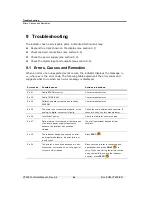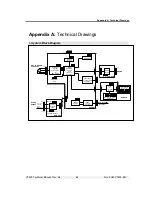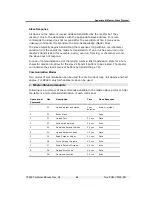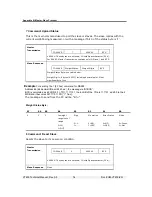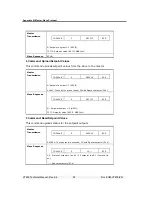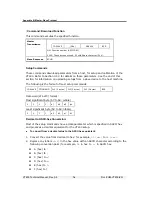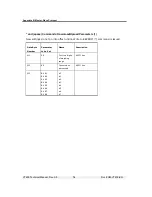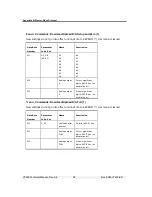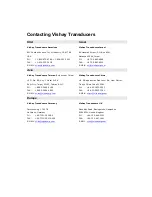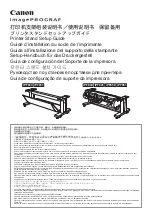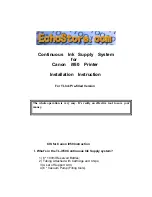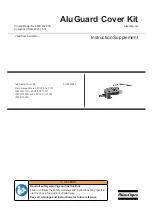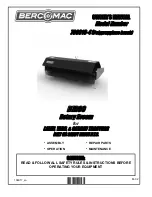
Appendix B: Master-Slave Protocol
VT400 Technical Manual, Rev. A5
69
Doc
#
UM-VT400-EN
Slave Response
All slaves on the network receive all data transmitted by the master but they
respond only to the data blocks with the appropriate slave address. For some
commands the slave does not respond after the execution. When it receives an
unknown command, it responds with a Non-Acknowledge (NACK) block.
The slave typically begins transmitting the response string within a one-character
duration from the end of the master's transmission. If an error has occurred in the
master’s transmission (for example: parity, overrun, framing, or checksum errors),
the slave does not respond.
In case of communication error the master waits in idle transmission state for a ten-
character duration to allow for the slave’s transmit buffers to be cleared. The master
can initialize the slave's receiver buffers by transmitting a 7Fh.
Communication Modes
Two modes of communication can be used for 20mA current loop :full duplex and half
duplex. For RS485, only half-duplex mode can be used.
v. Master-Slave Commands
Following is a summary of the commands available in the master-slave protocol. After
the table is a more detailed description of each command.
Operational
Command
Hex Description
Time Slave
Response
?
3F
Upload weight and status
Char
duration
weight
0 30
Reset
Slave
-
None
1 31
Upload
Tare
0.2
sec
Data
2 32
Keyboard
Emulation
0.2
sec
Echo
3
33
Download Setpoint Values
0.2 sec
Echo
4
34
Upload Setpoint Values
0.2 sec
Data
5
35
Read Setpoint Values
0.2 sec
Data
6
36
Force Setpoint Outputs
0.2 sec
Echo
7
37
Enable Setpoint Outputs
0.2 sec
Echo
8
38
Upload Error Code
0.2 sec
Data
;
3B
Download Function
0.2 sec
Echo






